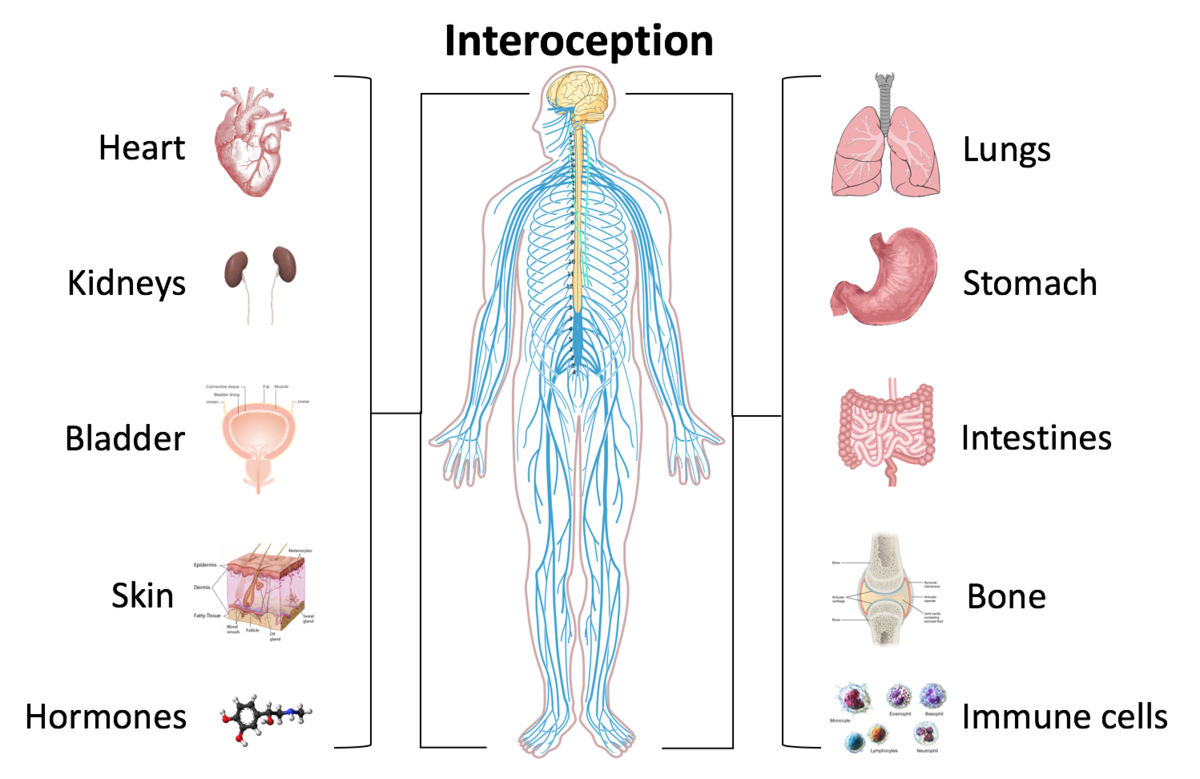Answer: Interoception refers to our ability to sense the internal state of the body, such as heartbeats, fullness, or breathing.
We generally think of the senses as referring to an ability to sense and perceive things in the outside world. For example, our visual system detects photons of light from our surrounding environments, our auditory system detects the compression and rarefaction of airwaves, and so on.
We also have an ability to detect the internal state of our body, and this sense is called interoception. The detection of our internal state helps our body maintain a sense of homeostasis. Interoception can occur at both the conscious level or at a non-conscious level.
Anatomy of interoception
Many brain regions receive interoceptive information, or facilitate in the passing of interoception information. There are a few routes by which interoception is communicated with the brain.
The anterolateral system
The anterolateral system, or the spinothalamic tract, conveys sensory information about pain, temperature, and crude touch from the skin into the brain. Additionally, it also carries interoception information from various organs.
This pathway arises via the contralateral spinal cord, synapsing in the ventromedial posterior nucleus of the thalamus before projecting into the insular cortex.
The visceroceptive system
The vagus nerve, cranial nerve X, in addition to releasing acetylcholine onto our internal organs as part of the parasympathetic nervous system, also receives inputs from those organs. These afferent information are called the visceroceptive system. The neurons synapse into the nucleus of the solitary tract before projecting into the thalamus, then finally into the insular cortex.
Interoceptive senses
Gastrointestinal fullness
Our stomach is able to communicate with the brain about the state of physical fullness. When we haven't eaten in a while, the stomach decreases in volume. At fasting state, such as in the morning, the average volume of the stomach is about 200mL. However, after eating a huge meal, the stomach physically distends, stretching to accommodate five times that volume!
The sensory neurons of the enteric nervous system line the stomach walls. Specifically, a population of mechanosensitive enteric neurons are capable of detecting stretch. When these neurons distort, they encode these distortion stresses as a series of action potentials, which are then conveyed into the ascending pathways.
Respiratory system activity
Interoception also occurs at the level of respiration. The two major components here are lung fullness, which is encoded by pulmonary stretch receptors, mechanoreceptors that send action potentials into areas of the medulla and pons. We have a system called the Hering-Breuer reflex, which decreases respiratory rate when the nervous system detects that the lungs are expanded.
The other system is chemoreception. In the medulla, there are chemoreceptors that detect the level of dissolved carbon dioxide in the cerebrospinal fluid. When this concentration rises, the medulla alerts the body that it is in a state of hypercapnia, and that the lungs should increase respiration rate to remove the buildup of carbon dioxide. These impulses are sent down to two efferent nerve systems, the intercostal nerve which causes the muscles surrounding the ribs to expand, and the phrenic nerve, which causes the diaphragm to lower, pulling air in through the lungs.
